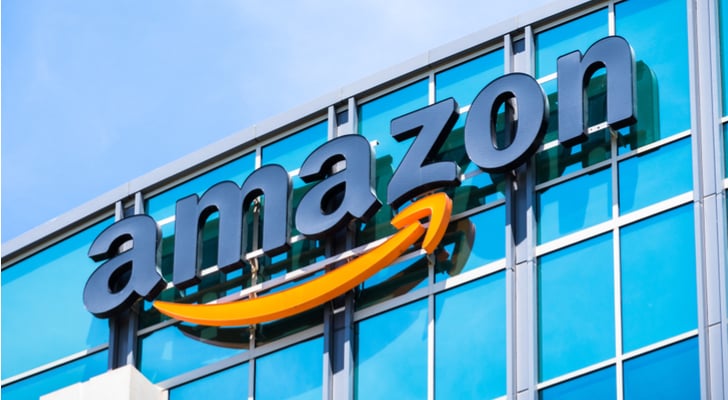Amazon (NASDAQ:AMZN) underwent a great deal of scrutiny following its mixed earnings report. Although parts of its results were solid, AMZN stock shed more than 5% of its value in the wake of the report. AMZN stock dropped due to the company’s guidance, which came in below analysts’ expectations.
All in all, it’s becoming clear that AMZN stock will not have an easy road back up to the $2,000 per share level and beyond. It’s worth remembering that as recently as November 2017, AMZN stock still traded under $1,000 per share.
So it should come as no surprise that Amazon stock is struggling to maintain its rapid rate of appreciation. Amazon stock already looked expensive heading into earnings. And now, there’s a big, new issue to worry about: Losing Amazon’s Prime’s most important advantage.
Amazon Prime Offers Many Services, But One Stands Out
A recent report in Business Insider quoted survey results from The Diffusion Group. The research agency polled 1,160 Amazon Prime members. It found that, by an overwhelming margin, Amazon’s most important perk is free expedited shipping. In fact, 79% of the respondents listed free shipping as Prime’s most important service.
Amazon Prime offers myriad other services. But few of them stand out as key reasons to pay the increasingly expensive Prime membership. Remember, Prime just went up from $79 per year to $99 per year in 2014, and then it was hiked to $119 in 2018.
Prime Music, Prime Photos, faster free deliveries from Whole Foods, Prime Video and a variety of other benefits other than free shipping may be sufficient to encourage some members to retain Prime, but most still are probably sticking with Prime because of the fast, free shipping.
Key Rivals Will Soon Have Free, 2-Day Shipping
Against that backdrop, it’s worth watching Deliverr and other Prime competitors closely in 2019. Deliverr, which was only founded in 2017, is already disrupting the market. It raised funding last October and aims to be the Uber of warehouses and fulfillment technology. The company is investing heavily in machine learning to predict where it should store goods, in order to deliver them most quickly to end users.
While Deliverr is new, it is already attracting key customers. Wal-Mart (NYSE:WMT), for example, has already partnered with Deliverr to greatly expand its free, two-day delivery options. As a reminder, Wal-Mart has offered free two-day delivery on orders over $35 for quite awhile, but it is rapidly increasing the number of products available on its website by allowing third-party vendors to use its marketplace as well. Wal-Mart is already the top rival to AMZN in total U.S. e-commerce sales, although WMT still trails AMZN by a large amount in that area.
Deliverr has picked up other key partnerships as well. It is becoming a key logistics partner for rapidly growing Canadian firm
Shopify (NYSE:SHOP). And Deliverr could provide a particularly compelling service for eBay (NASDAQ:EBAY). As it stands now, eBay does much of its fulfillment through Amazon, causing eBay packages to often arrive in Amazon packaging. That’s obviously bad for eBay’s brand. Deliverr, and other third-party competition, can offer neutral packaging that should be more appealing to companies like eBay.
Amazon’s Network Effect Can Be Reversed
The loss of the key Prime membership perk is a problem in and of itself. With around 100 million members, the company receives more than $10 billion annually from the program. That’s key, high-margin revenue for AMZN stock, since its operating margins are quite low elsewhere.
In a sense, Amazon has become similar to a warehouse club. Companies that use that model, like Costco (NASDAQ:COST) and Sam’s Club, generate diminutive profit margins from the goods they sell, but earn solid revenue streams from members who pay annual dues to shop at their stores.
In Amazon’s case, however, its virtuous cycle could start to go backwards. Many online shoppers, knowing they are already paying for Prime, only look at prices on Amazon’s site. Why go through the hassle of signing up for other sites and worrying about shipping costs when Amazon is so easy?
But once members start quitting Prime, knowing they can get fast, free shipping from Wal-Mart and other huge e-tailers, there is much less rationale for staying exclusively on Amazon’s site. A huge part of the bull thesis related to Amazon’s retail business is that it can raise prices later, once consumers are too lazy to do comparison shopping. Without a shipping advantage, Amazon’s comparative advantage diminishes meaningfully.
What It Means for Amazon Stock
Now, this competitive headwind won’t hurt AMZN stock for a quarter or two. In the nearer-term, analysts will be watching the growth of the company’s cloud business, and they will try to determine if the recent soft guidance by AMZN is a one-time thing or the start of a worrying trend.
In the longer-term, however, the health of Amazon Prime is a huge concern for the owners of AMZN stock. Already,almost one in three Americans are Prime members. Many analysts expect Prime membership to exceed 150 million within a few years.
That sort of exponential growth can be achieved by early-stage tech companies, but such growth gets more difficult to achieve for businesses as they get larger.
At this point, AMZN is starting to reach that ceiling, particularly in the United States. It’s worth considering how rosy analyst outlooks are for Prime in the U.S., particularly since its most compelling feature can and should be greatly undermined by competition. The valuation of AMZN stock is quite high. As a result, even small headwinds to the bull thesis could cause AMZN stock to sink.
At the time of this writing, Ian Bezek held no positions in any of the aforementioned securities. You can reach him on Twitter at @irbezek.

